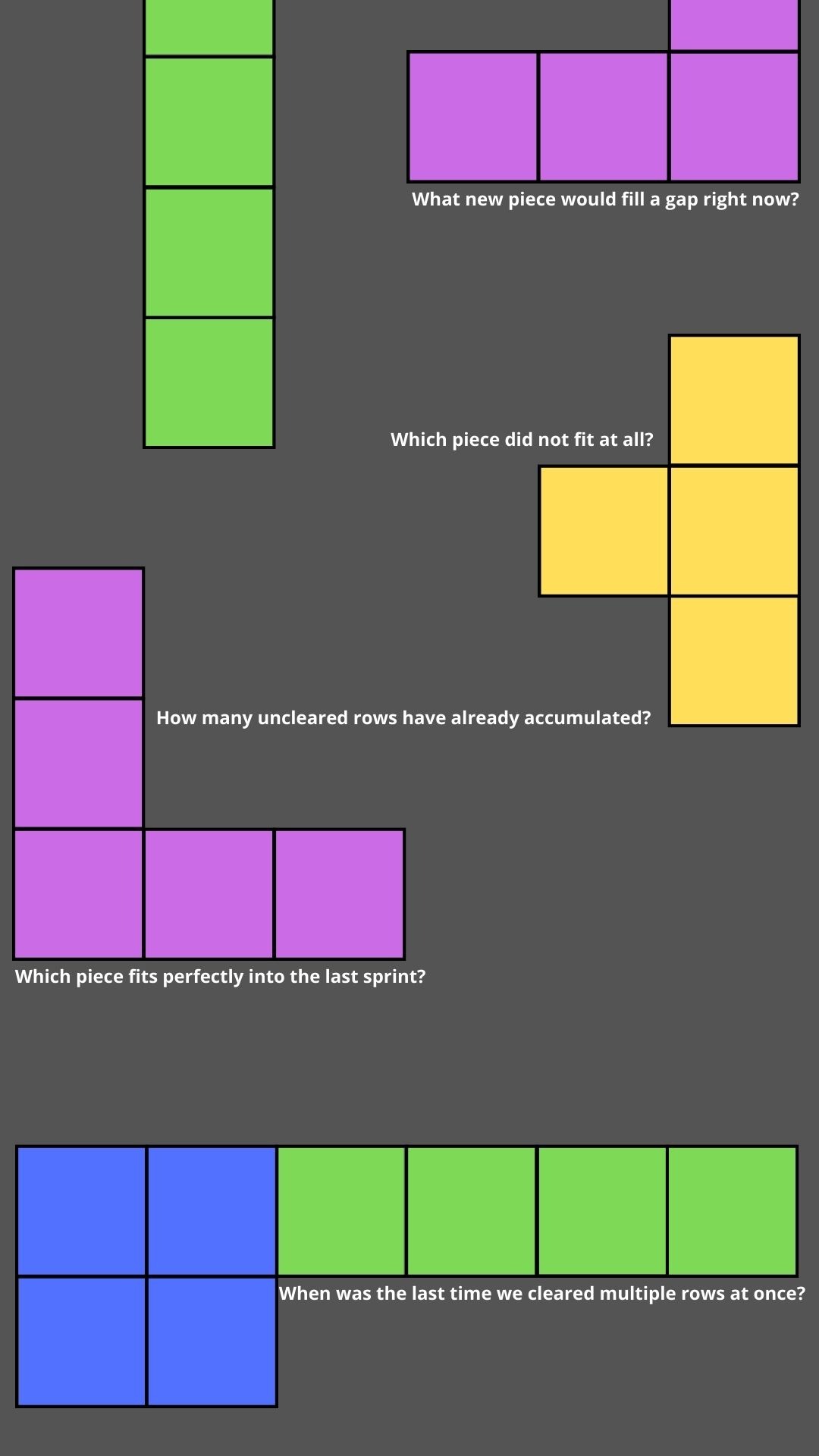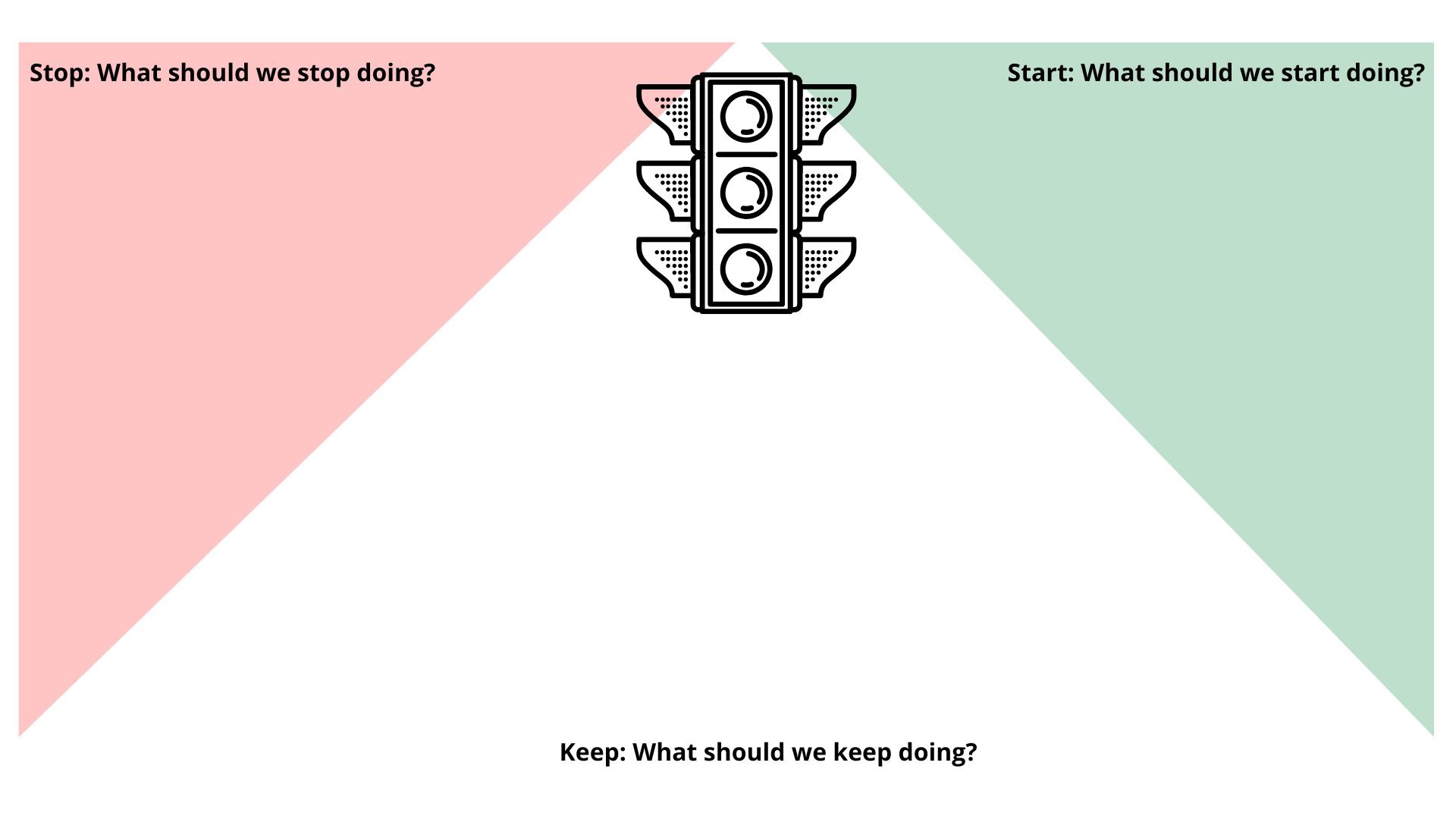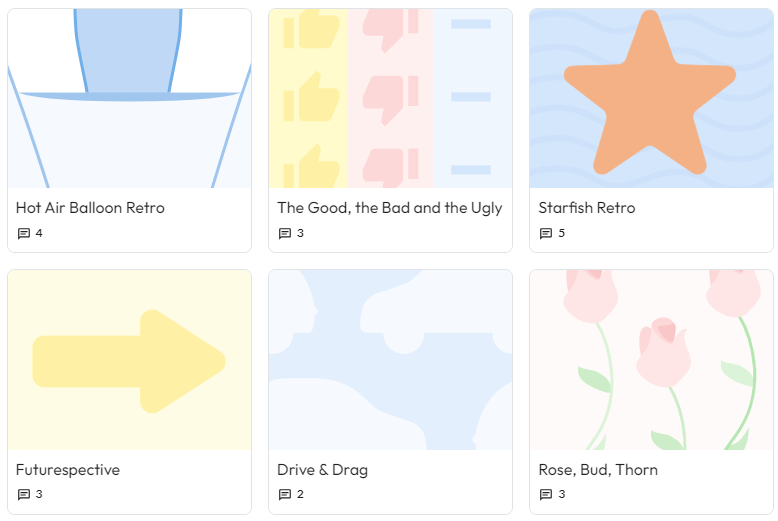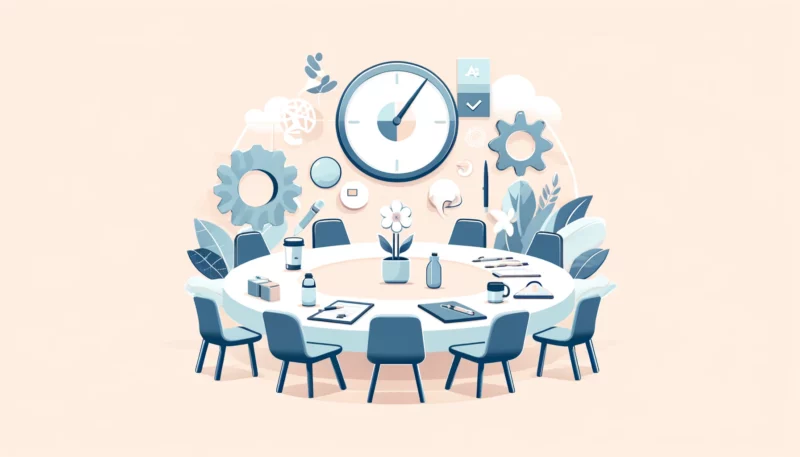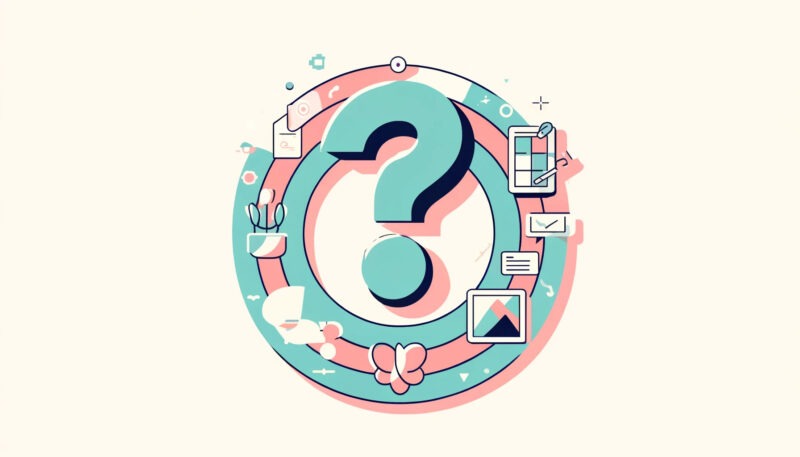Looking into the past to improve your team's future? That is the idea of Retrospectives. Yet they don't have to be "retro" and outdated at all - if you use the right agile retrospective templates.
In this post, I'll show you how to set up and facilitate a retrospective and, of course, I'll give you examples and templates for agile retrospectives. Are you ready? Let's go.
Retrospective agile examples
Agile retrospective templates: 5 Phases of a retrospective
Retrospectives typically have 5 phases in which the focus is on reviewing the last week(s) and to look together at what went well and where there can be improvements.
- Check in
- Data gathering
- Generating insights
- Deriving action items
- Check out
In order to collect valuable feedback, it is a condition for all phases to explicitly create a “judgement-free space” - always assuming that all participants have done the best possible job under the given circumstances. This basic principle is also referred to as the "prime directive".
- Check in
Start with a simple Ice Breaker. The purpose of this phase is to allow all participants to have their turn briefly, to loosen up and get them in the right mood for the following retro. You can find some interactive check-ins for whiteboards following the link.
- Data gathering
You may have already sent out a survey to your team in preparation for the Retro, or you may be using live feedback during the Retro. Whatever you decide, in this phase it is important to open the space for your colleagues' thoughts. The classic retrospective questions to get feedback: What went well, what went bad, what can we do better? Of course, this is the space where other fun agile retrospective templates can be implemented.
- Generating insights
After you have gathered enough feedback together, you should then structure it. Any overlaps that you can group? Is there a topic that you would like to deepen, e.g. on a whiteboard? Since many different topics have surely come together, it is a good idea to agree on the most important topics together. An anonymous "voting" is a good way to do this - e.g. each team member has 3 votes.
- Deriving action items
To ensure that the valuable feedback from the team doesn't get lost and that you can continuously improve your work processes and team culture, it is important to regularly create action items from the topics discussed. You can find tips on how to create sustainable action items here: How to successfully implement action items from retrospectives.
- Check out
Yaay, you have completed the main part of the retro. I hope you and your team enjoyed it (which obviously depends on the agile retrospective examples you chose). To officially close the retro, we recommend a short check-out. For example, simply ask how the others found the time invested and whether there was anything they particularly liked or that you should change next time.
By the way, based on the Double Diamonds model, one can argue that 5 Retrospective phases alone are not enough - you can read more about this in the linked blog post.
You can use agile retrospective templates online, on-site or hybrid (both online and on-site in the office). We have summarized 4 tips for retrospectives in hybrid teams for your inspiration.
Retrospective agile examples
Retrospective agile examples: 3 agile whiteboard templates
Whether you decide to use a retro tool or whiteboard, using the Start-Stop-Keep, Tetris or Vacation agile retrospective template, you can get very creative with your retrospectives.
Do you want to get started right away? I have prepared a few examples of agile retrospective templates for you.
Most Agile Coaches and Scrum Masters run in circles...
...fixing superficial symptoms. Time to use psychology to foster sustainable mindset change.
Retrospective agile examples
The vacation retrospective 
At this time, many of your colleagues might be on vacation? Therefore, your daily work routine may be a little different than usual. So why don't you use a holiday agile retrospective template and share what you experienced in the last sprint. Simply use our template for the agile retrospective with a few clicks.
- After all these sightseeing tours, what was your biggest highlight (in the last weeks)?
- What was the biggest fail, where did you choose the wrong restaurant for example?
- Which things did we forget to pack for our vacation?
- What learnings will we take into our next vacation planning?
Retrospective agile examples
The Tetris Retro 
It is often valuable to have a look at a topic from different angles in order to find the perfect fit. From all the agile retrospective templates out there, this one will surely be able to do so. one of my personal favorite retrospective agile examples:
- Which piece fit perfectly into the puzzle in the last sprint?
- Which piece did not fit at all?
- How many uncleared rows have already accumulated?
- When was the last time we cleared multiple rows at once?
- What new piece could we invent to fill a gap we have right now?
Retrospective agile examples
The Scrum retrospective Start Stop Keep 🔖
This agile retrospective template is better known as Start-Stop-Continue. With the refresh to Start-Stop-Keep, this reto provides the perfect agile example to work with a positive mindset and end with ideas for new actions. A classic one of the retrospective agile examples:
- Keep: What should we keep doing?
- Stop: What should we stop doing?
- Start: What should we start doing?
Retrospective agile examples
Which retrospective template suits your team?
As you have seen, there are many examples of agile retrospective templates. So which one suits your team best? The good news first: you really can't be wrong here! Since retrospectives are about actively sharing information, any of the retrospective agile examples will achieve the goal. Of course, every team has different preferences. Some questions you might ask yourself are:
- How creative does my team like it?
- Are there any special occasions that can be linked to (turn of the year, holidays, etc.)?
- How much time do I have for the retrospective (here you can find more on short retrospectives)?
For even more inspiration and agile retrospective templates or agile retrospective examples, I can recommend our post "54 Kickass Retrospective Ideas for Agile Teams". Have fun with your next retrospective!
Most Agile Coaches and Scrum Masters run in circles...
...fixing superficial symptoms. Time to use psychology to foster sustainable mindset change.






